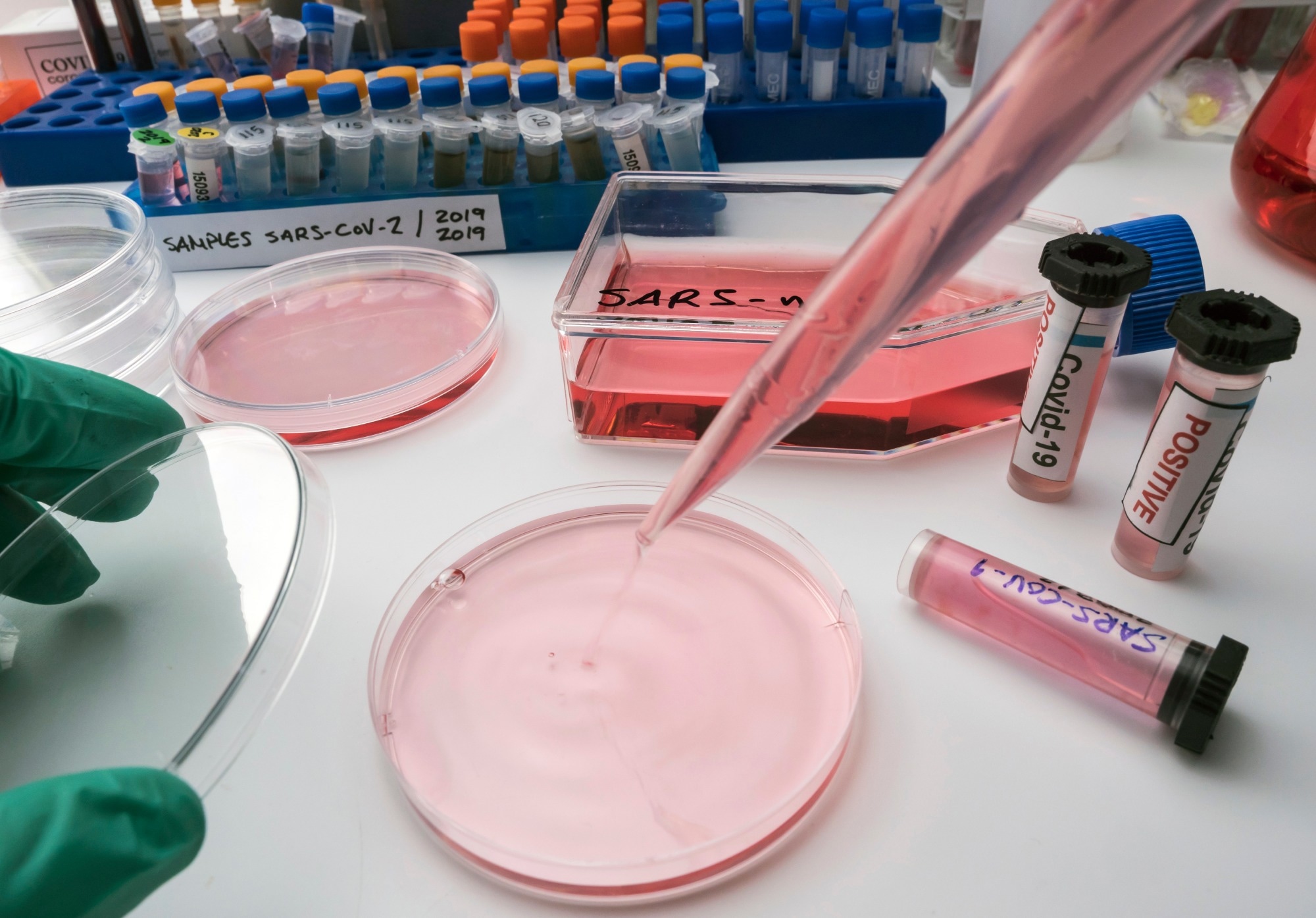A recent study published in Cell Death Discovery summarized the recent advances in the role of N6-methyladenosine (m6A) methylation in coronavirus disease 2019 (COVID-19).
 Study: m6A methylation: a potential key player in understanding and treating COVID-2019 infection. Image Credit: felipe caparros/Shutterstock.com
Study: m6A methylation: a potential key player in understanding and treating COVID-2019 infection. Image Credit: felipe caparros/Shutterstock.com
Background
Severe acute respiratory syndrome coronavirus 2 (SARS-CoV-2), the causal agent of COVID-19, belongs to the Coronaviridae family and is closely related to SARS-CoV and middle-east respiratory syndrome (MERS)-CoV.
To date, COVID-19 has caused more than 769.7 million infections and 6.9 million deaths worldwide. m6A is a common ribonucleic acid (RNA) modification and plays crucial roles in several biological processes.
Recent evidence suggests that m6A methylation is associated with viral infections and impacts host cellular functions. Besides, it can also influence the life cycle and pathogenicity of viruses.
As such, understanding the role of m6A methylation during SARS-CoV-2 infection can help inform COVID-19 prevention and treatment. In the present study, the authors reviewed available evidence on m6A methylation and its role in COVID-19.
Overview of m6A
m6A methylation is highly enriched in the stop codons, long internal exons, and 3’-untranslated regions. It is catalyzed by methyltransferase-like 14 (METTL14) and METTL3. Besides, other proteins, including the WT1-associated protein (WTAP) and RNA-binding motif protein 15 (RBM15), have been implicated in m6A methylation.
m6A readers are proteins recognizing and binding to m6A-modified RNA, such as insulin-like growth factor 2 mRNA-binding protein 1 (IGF2BP1), YTH N6-methyladenosine RNA-binding protein F1 (YTHDF1), heterogeneous nuclear ribonucleoprotein C (HNRNPC), YTHDF2, YTHDF3, YTH N6-methyladenosine RNA-binding protein C1 (YTHDC1), and YTHDC2. Demethylases are m6A erasers that reverse the m6A modification, such as AlkB homolog 5 RNA demethylase (ALKBH5).
COVID-19 and m6A
Evidence suggests that m6A modification is vital for SARS-CoV-2 transmission and pathogenicity. One study revealed the de-regulation of m6A modification in SARS-CoV-2-infected host cells. Another study reported higher m6A levels in SARS-CoV-2-infected Calu-6 cells and Vero cells.
Further, m6A downregulation was observed in leucocytes from infected patients. Significant downregulation of METTL3 was observed in the lung tissues of severe COVID-19 patients relative to healthy individuals.
One study observed elevated expression of HNRNPC, WTAP, fragile X messenger ribonucleoprotein 1 (FMR1), RBM15, heterogeneous nuclear ribonucleoprotein A2/B1 (HNRNPA2B1), YTHDF3, YTHDC1, and ELAV-like RNA-binding protein 1 (ELAVL1) in COVID-19 patients. In contrast, the expression of insulin-like growth factor-binding protein 2 (IGFBP2), IGFB2BP1, and RBM15B was substantially reduced.
SARS-CoV-2 infection could alter the epigenetic transcriptome of m6A in lymphocytes and enhance m6A modification of RBM15 to regulate immune responses. A study revealed the downregulation of METTL3 in host cells upon SARS-CoV-2 infection, decreasing m6A levels in host and viral genes and enhancing the expression of downstream inflammatory genes and innate immune responses.
Impact of m6A modification on SARS-CoV-2 evolution
One study explored methylation profiles in monkey and human cells infected with SARS-CoV-2 and revealed the dynamic distribution patterns. It also observed widespread occurrence of the modification on negative-strand RNAs. Moreover, the investigators used more precise techniques and demonstrated eight m6A modification sites at single-base resolution.
Functional analyses indicated that METTL3, METTL14, and ALKBH5 regulated SARS-CoV-2 replication and that a reduction in m6A reader, YTHDF2, promoted replication and infectivity. Moreover, SARS-CoV-2 can use host enzymes for methylation to adapt its DRACH sequence (D = A/G/U, R = A/G, H = A/C/U) and evade interferons.
m6A and COVID-19 diagnosis and treatment
The mechanisms underlying m6A methylation could be leveraged to develop prophylactic and therapeutic approaches for COVID-19. For instance, a model designed to predict COVID-19 risk by screening m6A-associated genes was successful.
Similarly, another study reported highly accurate prediction of COVID-19 occurrence using random forest models. Thus, prediction models are expected to reveal the early onset and progression of COVID-19.
m6A-related genes can be modified to reduce SARS-CoV-2 virulence. That is, knocking down YTHDF2, METTL14, and METTL3 elevated SARS-CoV-2 replication, whereas ALKBH5 knockdown repressed it, suggesting that drugs against m6A regulators could be effective in COVID-19 treatment.
There are reports of small molecules targeting m6A regulators with antagonistic effects against other viruses. However, additional research is warranted to screen m6A-related small molecules targeting SARS-CoV-2.
Concluding remarks
Although m6A modification has been implicated as critical in COVID-19, further investigations are necessary to unravel the underlying regulatory mechanisms. Additionally, research on m6A-related small molecules targeting SARS-CoV-2 is warranted. Overall, an increased understanding of the role of m6A modifications in COVID-19 may result in the development of novel therapies in the future.